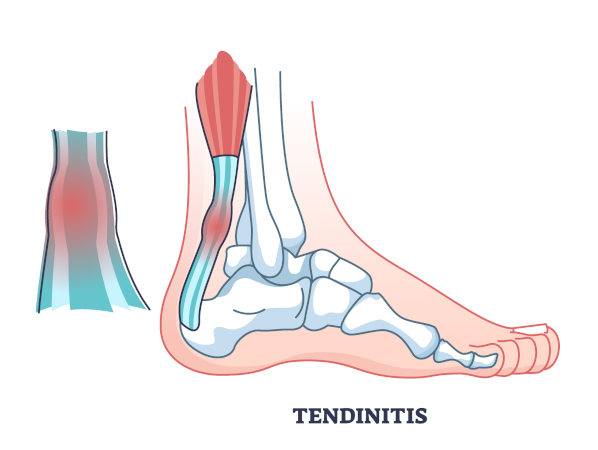- Home
- Advanced Treatments
- Platelet Rich Plasma (PRP)
Platelet-rich plasma (PRP) for chronic pain
Platelet-rich plasma (PRP) therapy is a cutting-edge regenerative medicine that enhances the body's natural healing processes to treat ligament, tendon, bone, and cartilage injuries and enhance healing post-surgery. Our team of experts has witnessed firsthand the transformative potential of PRP therapy in orthopedic care. This innovative treatment offers a promising alternative to traditional methods, providing patients with a minimally invasive option that can accelerate recovery and improve outcomes.
The use of PRP has gained significant popularity in the field of sports medicine and orthopedics for its power to enhance the healing of both acute and chronic ailments. If physical therapy and rest aren't successful in treating injured or damaged tendons, PRP may be recommended.
The goal of PRP is to reduce pain, repair damaged tendon tissue, and improve joint function.
- How does platelet-rich plasma therapy work?
- The benefits of PRP therapy
- PRP therapy for bone healing and cartilage repair
- PRP application in ligament and tendon injuries
- Enhancing surgical recovery with PRP
- What are the side effects of PRP?
- University Foot & Ankle Institute: rich in knowledge
- PRP FAQs
- Platelet-rich plasma vs corticosteroid injections, what’s the difference?
- Is PRP therapy painful?
-
Foot and Ankle Surgeon and Director of University Foot and Ankle Institute
Dr. Bob Baravaria DPM, FACFAS is a Board-Certified Podiatric Foot and Ankle Specialist. He is an assistant clinical professor at the UCLA School of Medicine and serves as Director of University Foot and Ankle Institute.
Dr. Baravarian has been involved in athletics his entire life and played competitive tennis in high school and college. He has an interest in sports medicine, arthritis therapy, and trauma/reconstructive surgery of the foot and ankle. He is also fluent in five languages (English, French, Spanish, Farsi, and Hebrew),
Read more about Platelet Rich Plasma (PRP) on Our Blog
 I am very happy with the care. All but one front desk staff are helpful. The xray and CT technicians are great with great pat...Puh C.
I am very happy with the care. All but one front desk staff are helpful. The xray and CT technicians are great with great pat...Puh C. My experience with Dr. Barvarian and the staff from the helpful receptionist to the physical therapist, everyone is knowledgeab...Antonio C.
My experience with Dr. Barvarian and the staff from the helpful receptionist to the physical therapist, everyone is knowledgeab...Antonio C. Overall, it was a great experience. I've been coming to Dr. Kellman for about a year and he and his staff are very helpful.Vanessa W.
Overall, it was a great experience. I've been coming to Dr. Kellman for about a year and he and his staff are very helpful.Vanessa W. ExcellentDebasish M.
ExcellentDebasish M. Everyone was friendly and professional.Victor L.
Everyone was friendly and professional.Victor L. Very efficient and an excellent serviceHorwitz J.
Very efficient and an excellent serviceHorwitz J. Chaos in the office checkin. We weren’t forewarned about the iPad data collection. That made me late for a following appointmen...Carl C.
Chaos in the office checkin. We weren’t forewarned about the iPad data collection. That made me late for a following appointmen...Carl C. Dr Nalbandian is an exceptional doctor and person. The staff respectfully & compently delt with an issue I had regarding a prev...Karen M.
Dr Nalbandian is an exceptional doctor and person. The staff respectfully & compently delt with an issue I had regarding a prev...Karen M. Yes- I highly recommend Dr Bob Baravarian at University Foot & Ankle Institute for bunion surgery. He is an excellent surgeon. ...Lisa L.
Yes- I highly recommend Dr Bob Baravarian at University Foot & Ankle Institute for bunion surgery. He is an excellent surgeon. ...Lisa L. Visiting the office is a pleasurable occurance.Thomas J.
Visiting the office is a pleasurable occurance.Thomas J. Dr Kelman and his staff are always wonderfully caring and respectful to my father who has Alzheimer's dementia.Erland E.
Dr Kelman and his staff are always wonderfully caring and respectful to my father who has Alzheimer's dementia.Erland E. Thank you for being there for your patients.Dieter B.
Thank you for being there for your patients.Dieter B.



